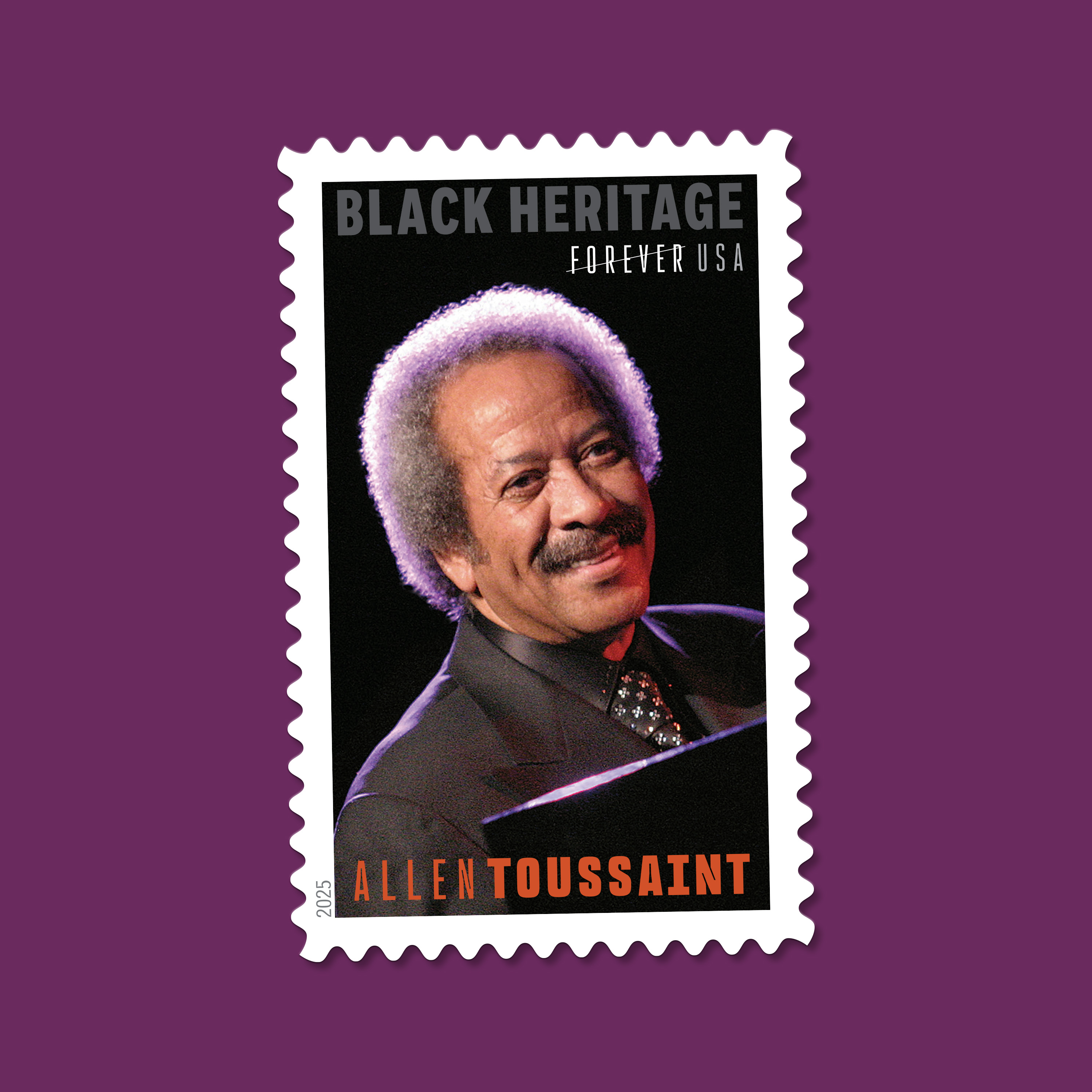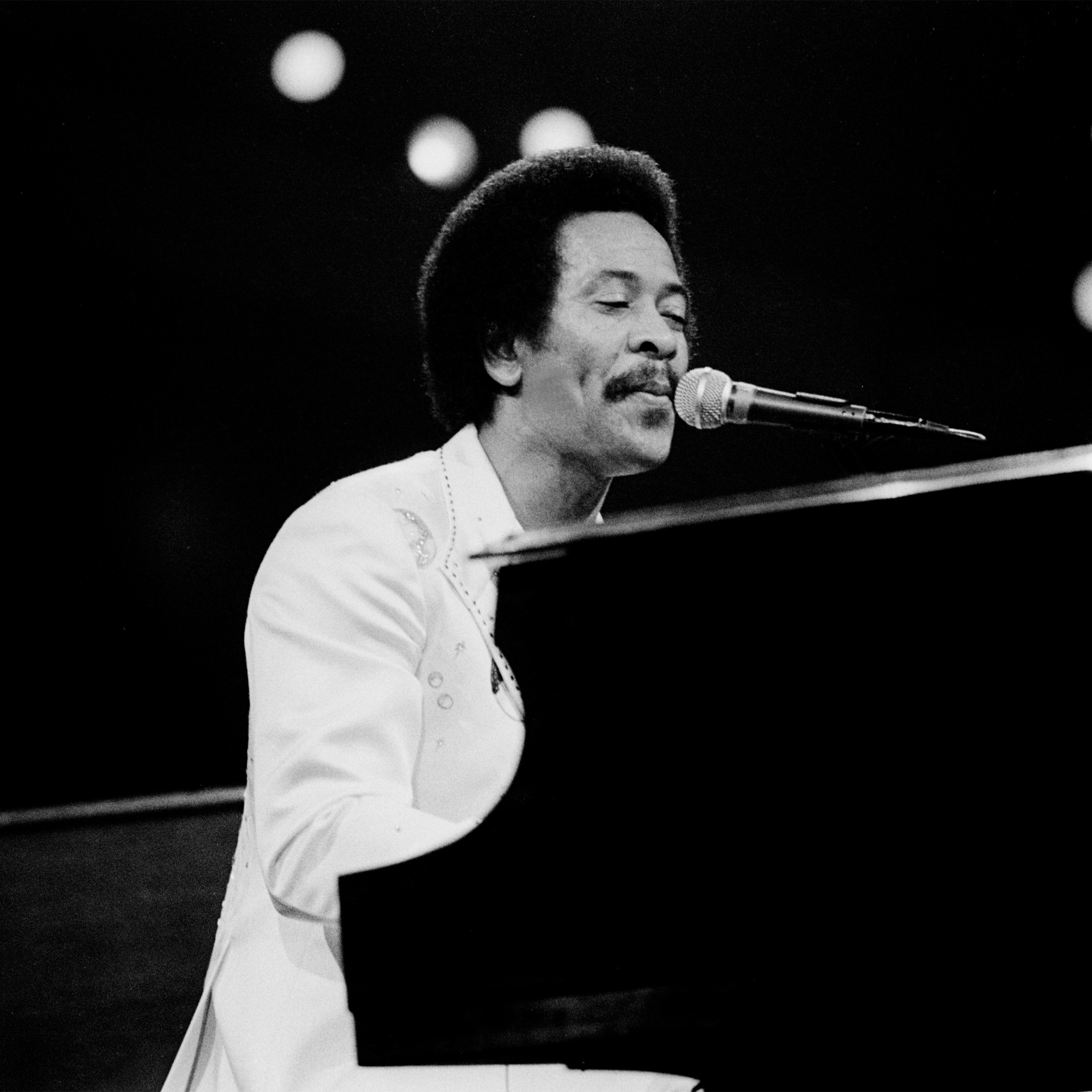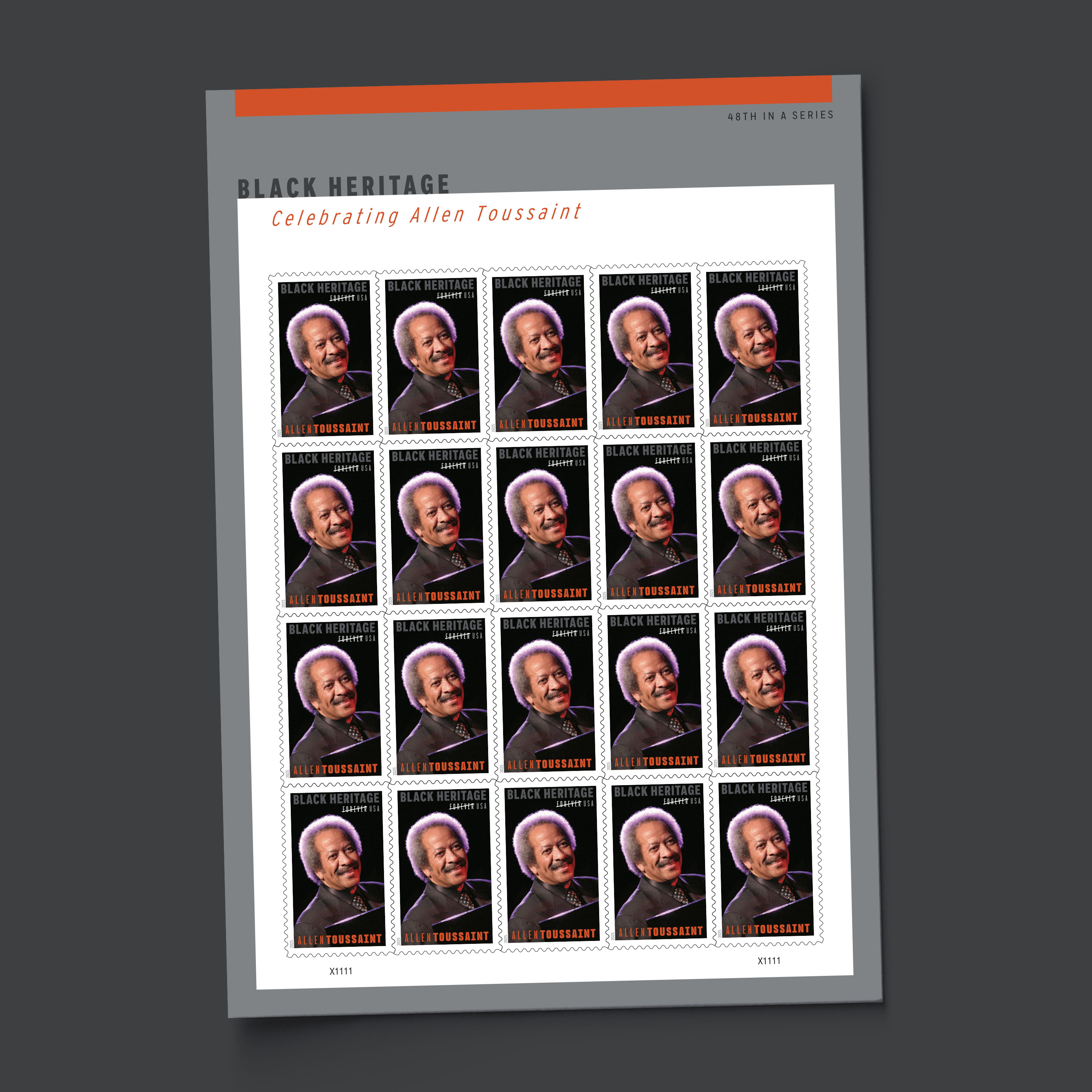
Allen Toussaint
Allen Toussaint (1938–2015), a true son of New Orleans, was the heartbeat of the city’s iconic rhythm and blues sound, bringing its infectious groove to audiences around the globe. The 48th stamp in the Black Heritage series celebrates this musical powerhouse — a virtuoso pianist, singer, songwriter, composer, arranger, and producer whose genius gave rise to countless hits across a wide range of genres.
Quiet giant of rhythm and blues
Famously modest and soft-spoken, Toussaint (pronounced too-SAHNT) thrived in behind-the-scenes roles and rarely performed live until late in his career. Perhaps that’s why art director Ethel Kessler knew little about him before taking on the task of designing a stamp in his honor — but that quickly changed.
“All it took was for me to research his discography and play some of his recordings for me to get hooked,” Kessler remembers. “He was everywhere. All the top players have either played with him or played his music.”
Toussaint’s state-of-the-art recording facility, Sea-Saint Studios, became a magnet for talent, attracting not only New Orleans legends but also international stars like Joe Cocker, Elvis Costello, Patti LaBelle, Ramsey Lewis, Paul McCartney and Wings, and Paul Simon. His songs resonated across genres, with many artists covering his work over the years. “Fortune Teller,” originally recorded by Benny Spellman in 1962, found new life through artists like the Rolling Stones, the Who, the Hollies, the Iguanas, Iggy Pop, and Robert Plant and Alison Krauss, among others.
Toussaint's 2009 album The Bright Mississippi is a rich collection of jazz standards, featuring the works of legends like Sidney Bechet, Duke Ellington, Thelonius Monk, and Django Reinhardt.


From local talent to studio icon
Born and raised in the working-class Gert Town district of New Orleans, Toussaint grew up immersed in a diverse musical landscape. The family radio introduced him to classical, opera, country, gospel, and boogie-woogie music, while the vibrant sounds of the neighborhood echoed all around him. Toussaint would later say music was in his genes: His father had played the trumpet professionally, and although his sister briefly studied piano, it was six-year-old Allen who couldn’t resist the instrument. By age 13, he had formed his first band, the Flamingos, with guitarist and friend Snooks Eaglin.
An early encounter with local pianist Henry Byrd, better known as Professor Longhair, was a pivotal moment for Toussaint. He would later credit “Fess” as a lasting influence on all his music. Yet, Toussaint’s versatility extended far beyond, as he mastered the styles of Fats Domino, Ray Charles, and virtually every tune he heard on the radio, regardless of genre — a skill he assumed was common. His talent quickly made him a sought-after studio musician, and in 1958, he released his first solo album, The Wild Sound of New Orleans, a showcase of his imaginative instrumental compositions.

Bringing the legend to life on a stamp
Judging by the number of photos of Toussaint in various collections, it was clear to Kessler that he was a popular subject. “He was very handsome,” she says, “always dressed to impress in a smashing outfit when performing.”
Given Toussaint’s extensive career, choosing the perfect image for the stamp could have been daunting. However, his deep connection to the piano made the decision clear: The stamp would capture him at the instrument that defined so much of his musical genius.
“Once I started reviewing images of him for the stamp, I quickly zeroed in on my top picks,” Kessler recalls. “From there, it’s all about the lighting. I considered everything we could find — shots of him performing outdoors at a festival, or in the dim ambience of a venue. It’s really about how the image will translate to stamp size,” she explains. “I looked for a moment where he seemed fully immersed in the joy of his music.”
Kessler delivered. The final stamp captures a radiant Toussaint at the piano, elegantly dressed in black and bathed in a soft violet light against a dark background. The photograph, taken in New York City in 2007, marks a poignant chapter in Toussaint’s life. After Hurricane Katrina devastated much of New Orleans — destroying his home and recording studio — he began touring more extensively. Yet, even in the face of such loss, Toussaint’s signature grace and optimism shone through. As he put it, he believed good things would balance out the bad.
And as he sang, New Orleans “doesn’t leave you just because you leave town. We’ve got our own special swing; it’s a New Orleans thing.”
